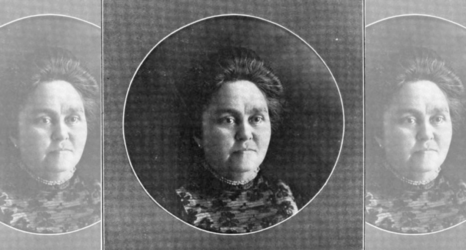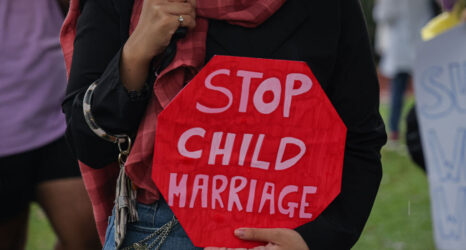“We do this because the world we live in is a house on fire and the people we love are burning.”
—Sandra Cisneros

When droughts in Bolivia caused the potatoes cultivated by Senobia’s family to fail, she began to look for solutions. She was only 7. Her big idea? Ice cream.
It took years but Senobia, now 24, opened Bolivia’s first ecologically certified ice cream parlor in Bolivia. Utilizing natural products sourced from women in her community, Senobia’s Meraki brand grew from a zucchini and black and yellow carob flavor, to a range that now includes mushroom as well as amaranth and features biodegradable packaging. She trains and employs single mothers and others with limited access to resources, working with a further 400 community members on a tree-planting initiative of a thousand pines per year. (!) Using what she has at her young age, Senobia is leveraging her power and holding the door open.
Against the backdrop of countless climate disasters in the past year alone—hurricanes, floods and fires—Senobia’s work stresses the cruelty of how young people are being robbed of their youth, forced to grapple with a heating world fueled by greed and indifference. Nevertheless, Senobia’s leadership and entrepreneurship serve to remind us of the creative potential that girls and young women possess, their dedication to bettering their communities in the face of catastrophe, and the delightfully unexpected directions that can take.
This year’s theme for World Earth Day, Planet vs. Plastics, highlights the need for responsible consumption and business practices. As Senobia puts it, standing in her shop flanked by a guitar and flowers, whereas tackling pollution and environmental protection are crucial to her business, a commitment to bring her community with her is an act of solidarity with the women in her community and their environment.
Against the backdrop of countless climate disasters in the past year alone—hurricanes, floods and fires—Senobia’s work stresses the cruelty of how young people are being robbed of their youth, forced to grapple with a heating world fueled by greed and indifference.
How the Climate Crisis Effects Girls
We live in communities on a shared planet and therefore, the climate crisis must be approached collectively. Yet, due to a number of interconnected historical injustices, this we is often narrowly defined.
The global agenda to combat the degradation of the environment has recognized this reality: There is international consensus that countries that have contributed the most to global warming ought to bear the brunt of redress, as the impact is most strongly felt in areas that have contributed the least.
The funny thing about power is its insidiousness. Coverage of efforts to address the climate crisis have skewed north—a metaphor made literal when Ugandan climate activist Vanessa Nakate was infamously cropped out of the Associated Press’ published image from the Davos summit. Across decision-making platforms around the climate crisis, diverse representation and impactful engagement are still lacking.
Girls have been systematically erased from conversations about the climate crisis. For many in circumstances similar to Senobia’s, this erasure has happened despite the life-changing impacts it is already having on their lives. Climate change is a crisis for girls’ rights, as it exacerbates pre-existing risk factors and heightens them to dangerous extremes.
In Ethiopia, the conflict and drought pushed 14-year-old Asma’s (name changed for privacy) family into poverty, coerced into making the difficult decision between her education and marrying her off to a wealthy older suitor who could better provide for her. Luckily, Asma’s family was able to stand by her—sadly this is not the case for many.
The chaos following the immediate aftermath of climate disasters exposes girls to sexual harassment and abuse (caused by overcrowding and a lack of safe services), and slow onset climate impacts can lead to a steady decline of livelihoods, driving families to harmful ‘coping strategies’ such as child marriage.
Girls have been systematically erased from conversations about the climate crisis. … This erasure has happened despite the life-changing impacts it is already having on their lives.
The effects of the climate crisis are being felt all over the world, but the intensity varies. In some areas, overlapping systems of oppression converge and lead to increased rates of child marriage.
Bangladesh, Burkina Faso, Central African Republic, Chad, Guinea, Malawi, Mali, Mozambique, Niger and South Sudan are the 10 highest risk global hotspots for the intersection of the climate crisis and child marriage. Crucially, a number of these countries have some of the youngest populations globally—a demographic shift heralded as essential to economic growth that holds the promise of more innovative solutions to the challenges of climate change and inequality, like Senobia and her ice cream shop. The hope and urgency of a new generation needed to confront a rapidly evolving planet. A last line of defense, perhaps.
Supporting Girls’ Climate Activism
On the one hand, it was thrilling to see a girl (at the time), Greta Thunberg, as one of the most recognizable faces of the movement against the climate crisis, but on the other, less than 2 percent of national climate plans mention girls. We must resist disempowering notions of “giving voice to girls,” and listen to them—both the ones that make it to global platforms and those who advocate within their own families and local communities—while drawing attention to their leadership on this issue
Before Senobia’s big break, her family would later move to the city because the countryside had become unproductive, the earth infertile with recurrent drought. At 14, she was left to fend for her six brothers and herself, after her parents were forced to leave due to the expenses. She got a job as a substitute teacher for younger children and was also able to pay for her studies on a gastronomy course that changed her life, allowing her to achieve her dreams and become a key figure for the environment and women and girls’ rights in her community.
Gender equality is one of the most revolutionary and transformative foundations required to change the world. A focus on girl-led movement building is critical for climate action combined with an investment in social behavioral models that challenge harmful gender norms.
A study of 70 countries over 40 years found that autonomous feminist movements—shared action to create change for gender equality, led by individuals and groups independent of government—were the key component in a country introducing policy protections for violence against women and children, surpassing factors such as progressive governments and women in parliaments.
With the increasing normalcy of climate disasters, we have reached the unfortunate point where the reality is one of adaptation: What can we do to mitigate the impact of the climate crisis now that it is here?
In addition to supporting girls’ activism on climate change, policymakers must ‘shockproof’ the systems and services girls rely on most in the advent of climate disasters. Save the Children’s report, “Girls as the centre of the storm—Her planet, her future, her solutions,” explores how the climate crisis impacts girls’ rights and recommends practical countermeasures.
Much of the discourse around the climate crisis has been around convincing—that climate change is real; that it is a consequence of human activity; that it poses an existential threat to the planet; and, that there are specific actions we can and must take to stop it. With the increasing normalcy of climate disasters, we have reached the unfortunate point where the reality is one of adaptation: What can we do to mitigate the impact of the climate crisis now that it is here?
What will it take for decision-makers to be convinced that girls should not just be a focus of responses, but also at the forefront of change? For girls like Senobia, biding their time has never been an option. Read the room.
Up next:
U.S. democracy is at a dangerous inflection point—from the demise of abortion rights, to a lack of pay equity and parental leave, to skyrocketing maternal mortality, and attacks on trans health. Left unchecked, these crises will lead to wider gaps in political participation and representation. For 50 years, Ms. has been forging feminist journalism—reporting, rebelling and truth-telling from the front-lines, championing the Equal Rights Amendment, and centering the stories of those most impacted. With all that’s at stake for equality, we are redoubling our commitment for the next 50 years. In turn, we need your help, Support Ms. today with a donation—any amount that is meaningful to you. For as little as $5 each month, you’ll receive the print magazine along with our e-newsletters, action alerts, and invitations to Ms. Studios events and podcasts. We are grateful for your loyalty and ferocity.





